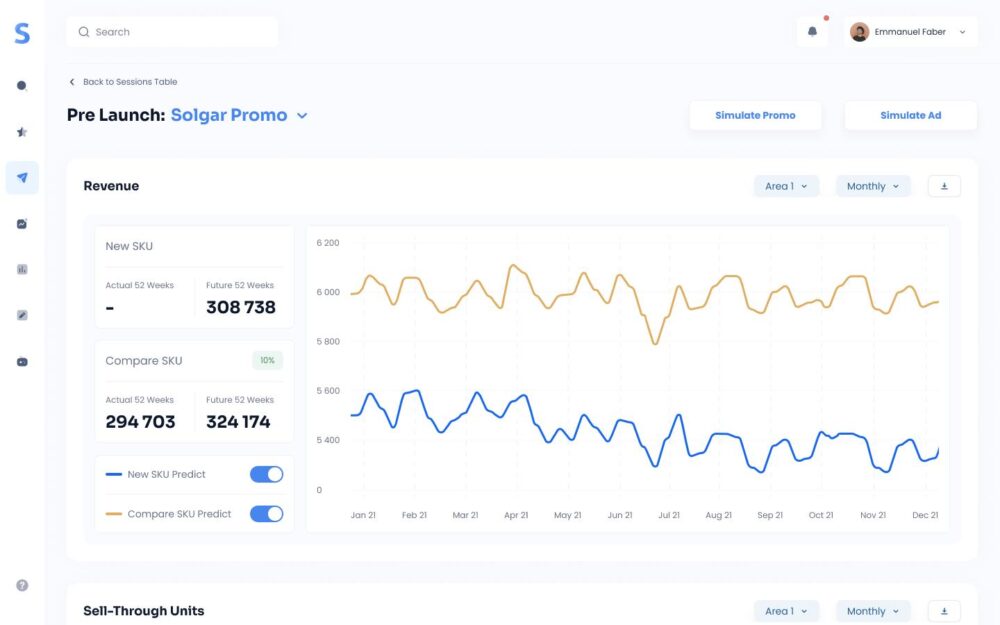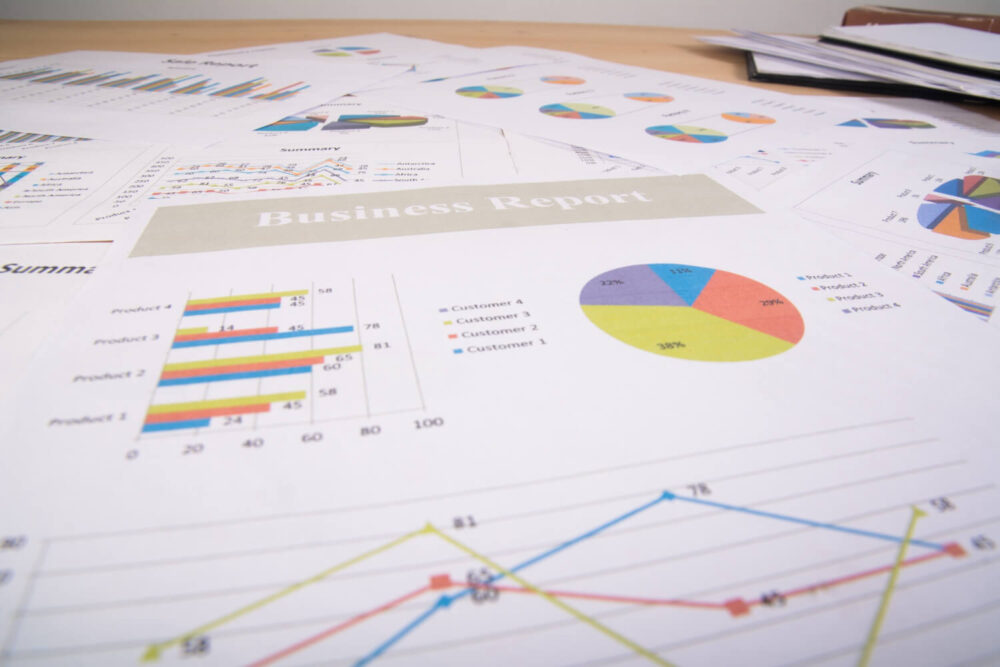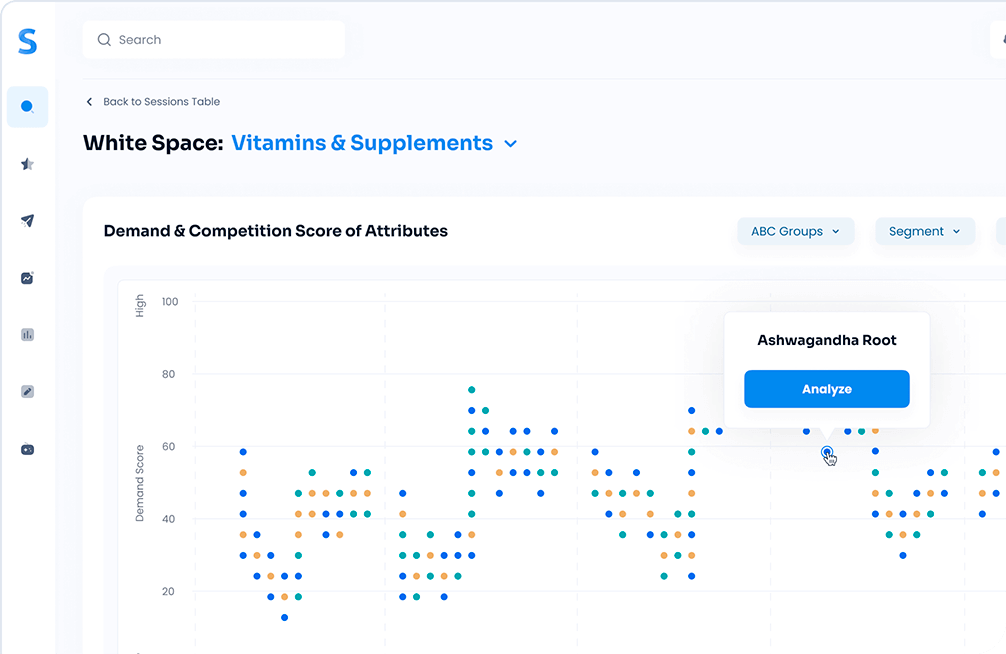In the fast-paced and competitive world of business, sales forecasting is not a luxury but a necessity for any company, particularly when it comes to launching new products. Making informed predictions about potential sales volumes can help a company effectively strategize, optimally allocate resources, and make crucial financial decisions.
Despite this, many businesses are stuck using outdated methods for sales forecasting, which often lack both accuracy and efficiency. Enter the world of artificial intelligence (AI). This emerging technology is rapidly transforming numerous business operations, and sales forecasting is certainly no exception.
Imagine a tool that could analyze vast amounts of data, discern patterns, adapt to market changes, and make accurate predictions – all while saving both time and costs. This isn’t a vision of some distant future; it’s a reality made possible right now with AI.
With AI’s integration, sales forecasting transcends from a complex, often error-prone process to a strategic, insightful, and cost-effective function. So whether you’re part of a small startup or a large multinational, understanding the value of AI in sales forecasting is essential. This article delves into why sales forecasting matters, the challenges with traditional methods, and how AI can revolutionize your sales forecasting process. The future of business is being written in code, and the time to embrace AI-driven sales forecasting is now.
The Importance of Sales Forecasting

In the realm of business, navigating through uncertainty is part of the game, and sales forecasting serves as the compass guiding this journey. It’s a pivotal practice with a profound impact on a broad spectrum of business decisions and processes.
Sales forecasting is much more than just projecting numbers on a graph; it’s about anticipation, strategy, and aligning resources with expectations. In essence, it’s the bridge that connects a company’s past and present performance to its future.
When done effectively, sales forecasting has a direct influence on resource allocation. By predicting the demand for products or services, it ensures resources are deployed where they’re needed most. It prevents scenarios of overstocking or understocking and helps businesses maintain a seamless flow of products, thereby optimizing customer satisfaction.
It also plays an instrumental role in financial planning. With precise sales forecasts, companies can better manage cash flows, plan budgets, and set realistic financial targets. It forms the backbone of investment decisions as it provides insights into potential returns.
Risk management is yet another domain where sales forecasting holds substantial value. It enables businesses to prepare for unexpected market fluctuations and helps them navigate through unforeseen challenges, providing a safety net against market volatility.
Sales forecasting also contributes to customer satisfaction and loyalty. Accurate prediction of demand ensures that businesses can consistently meet customer needs, leading to stronger relationships and enhanced customer loyalty.
In summary, sales forecasting is the cornerstone of strategic planning and decision-making. It’s a tool that, when leveraged effectively, can steer a business toward growth and success. However, despite its importance, many companies still struggle with sales forecasting due to reliance on outdated, inefficient methods.
Challenges with Traditional Forecasting Methods

Traditionally, sales forecasting has been a painstaking process. It’s often based on human judgment, manual calculations, and static models – all of which have their limitations.
One of the biggest challenges is that traditional forecasting methods are prone to human error. Relying heavily on individual judgments and manual data processing increases the likelihood of miscalculations and oversights. Consequently, the forecasts produced may deviate significantly from actual outcomes.
Furthermore, many traditional methods are static and inflexible. They use rigid models that don’t adapt well to sudden market shifts or evolving trends. In today’s rapidly changing business landscape, this lack of adaptability can result in inaccurate forecasts and missed opportunities.
Then there’s the issue of time and resources. Traditional sales forecasting can be extremely time-consuming, particularly for larger enterprises dealing with vast quantities of data. Companies often dedicate entire teams to this task, leading to substantial resource allocation and increased operational costs.
Finally, we can’t overlook the fact that traditional methods often struggle with capturing the complexity of modern markets. Today’s markets are influenced by a myriad of factors, including customer behavior, competitive activity, macroeconomic indicators, and more. Unfortunately, most traditional forecasting tools lack the sophistication needed to analyze these diverse inputs comprehensively.
Given these challenges, it’s evident that traditional forecasting methods are becoming less viable in today’s data-driven, fast-paced business environment. This is where artificial intelligence comes to the rescue. AI has the potential to transform sales forecasting, offering solutions that are accurate, efficient, adaptive, and cost-effective. It’s the next big leap in sales forecasting, enabling businesses to navigate the future with confidence.
The Power of AI in Sales Forecasting

Sales forecasting is undergoing a dramatic transformation, thanks to the advent of artificial intelligence (AI). The ability of AI to handle vast amounts of data, detect patterns, and make informed predictions is revolutionizing how businesses approach forecasting.
The key strength of AI in sales forecasting lies in its ability to learn. Machine learning algorithms, a subset of AI, can analyze past sales data, recognize patterns, and learn from them. They are not bound by static rules; they adapt and improve over time, delivering forecasts that improve with each iteration.
AI also excels in dealing with complexity and volume. Modern businesses generate enormous amounts of data from a multitude of sources. Traditional methods often struggle to process this data effectively, let alone extract meaningful insights from it. But AI thrives on data. The more data it has, the better it can learn, adapt, and predict.
Moreover, AI can manage the dynamism of the market. Unlike traditional methods that can be caught off guard by sudden market changes, AI-powered tools can quickly adjust to new information, ensuring that the forecasts remain relevant even in volatile markets.
Finally, AI can significantly reduce the time and resources spent on forecasting. It can automate the process, eliminating manual tasks and freeing up valuable time. Not to mention, AI can deliver more accurate forecasts, which can save costs in the long run by preventing poor decisions based on inaccurate predictions.
With these capabilities, AI is truly a game-changer for sales forecasting. It provides a level of accuracy, efficiency, and adaptability that traditional methods can’t match. As businesses venture into the future, embracing AI in sales forecasting isn’t just a smart move—it’s a necessity.
AI vs Traditional Forecasting: A Comparison

The application of artificial intelligence in sales forecasting has brought about a paradigm shift in the way businesses anticipate future sales. Let’s make a side-by-side comparison to illustrate how AI holds an edge over traditional forecasting methods.
Accuracy: Traditional methods, which often rely on simplistic statistical models and human judgment, are more susceptible to errors. On the other hand, AI uses advanced algorithms that learn and adapt from historical data, drastically reducing the error rate and improving forecast precision.
Scalability: As a business grows, the data it needs to process for accurate forecasting also increases exponentially. AI systems are built to handle large volumes of data, making them a scalable solution, unlike traditional methods which can be overwhelmed by the data growth.
Speed: While manual data processing can be time-consuming, AI can analyze huge data sets and generate forecasts in a fraction of the time, offering a clear advantage in processing speed.
Adaptability: Traditional models are often rigid, struggling to adjust to sudden market changes or evolving trends. AI systems, conversely, are designed to learn from new data and adapt to changing market conditions, making them more responsive and relevant.
Cost: While the initial cost of implementing AI may be higher, the long-term savings from improved accuracy, time efficiency, and better decision-making can lead to significant cost reductions in the long run.
Complexity: AI has the capacity to analyze complex relationships between various influencing factors and incorporate these into forecasts, something that is often challenging for traditional methods. This allows AI to capture the complexity of modern markets more accurately.
In each of these dimensions, AI exhibits clear advantages, making it a powerful tool for businesses looking to enhance their sales forecasting. It’s no longer a question of ‘if’ businesses should adopt AI for sales forecasting, but ‘when’.
Future of Sales Forecasting

As we venture further into the era of digitization, the future of sales forecasting seems unequivocally intertwined with advancements in AI. It’s clear that the traditional ways of forecasting are gradually giving way to more advanced, AI-powered methods, providing a glimpse into what the future holds.
The sheer amount of data generated by businesses is expected to grow exponentially in the coming years. And with AI’s prowess in handling voluminous data, it’s primed to become the go-to solution for sales forecasting, managing the complexities of big data with relative ease.
The adaptability of AI will be a crucial factor in dealing with the dynamic nature of future markets. As trends evolve and consumer behaviors shift, AI-powered tools will have the flexibility to incorporate these changes, delivering up-to-date and relevant forecasts.
Cost-effectiveness is another promising aspect of AI-driven forecasting. As AI continues to automate and streamline the forecasting process, businesses are likely to witness significant savings in time and resources, making forecasting more efficient and less burdensome.
One of the intriguing developments in this space is the integration of AI with other emerging technologies. Imagine the convergence of AI with technologies like IoT and blockchain, offering even more sophisticated and secure forecasting solutions.
A perfect illustration of the direction in which sales forecasting is moving can be found in modern, forward-thinking solutions like Simporter. Simporter epitomizes the application of AI in sales forecasting, highlighting the transformative potential of this technology. In the next section, we delve deeper into what Simporter offers and how it exemplifies the future of sales forecasting.
Spotlight on Simporter: AI-Driven Forecasting

Simporter is a cutting-edge solution that captures the essence of AI-powered sales forecasting. Designed with a deep understanding of modern market intricacies, Simporter showcases the incredible potential of AI in reshaping the sales forecasting landscape.
What sets Simporter apart is its ability to predict product trends. It does this by analyzing a variety of attributes such as ingredients, sensory aspects, and need states. It harnesses data from a broad spectrum of sources – Instagram mentions, eCommerce reviews, product descriptions, and search data, providing businesses with a comprehensive understanding of emerging market trends.
But Simporter doesn’t just stop at data analysis; it offers the opportunity for users to apply this research into concept development. Users can blend attributes to create product concepts, receiving a total score that allows them to rank these concepts based on their potential market impact.
Another unique offering from Simporter is its ability to generate concept descriptions and identify high-performing concepts automatically. This feature accelerates the product development process, making it not just faster but also more efficient.
But where Simporter truly shines is in its capability to forecast sales and incremental sales prior to a product launch. Utilizing the power of AI, it provides businesses with accurate predictions, arming them with valuable insights that can inform and enhance their product launch strategies.
Simporter is a testament to the transformative power of AI in sales forecasting. It signifies a move away from traditional, labor-intensive forecasting methods, toward an approach that is data-driven, efficient, and adaptable. For businesses looking to navigate an uncertain future, Simporter provides a reliable compass, powered by AI.
Conclusion

In this rapidly evolving business environment, understanding and anticipating market trends is no longer just an advantage, it’s a necessity. Accurate sales forecasting has become a cornerstone of successful business strategy, informing critical decisions from resource allocation to financial planning. The challenges with traditional forecasting methods have been significant, often resulting in inefficiencies and inaccuracies that could negatively impact a business’s trajectory.
The advent of AI, however, is revolutionizing sales forecasting. With its ability to handle vast amounts of data, generate accurate predictions, adapt to changing market conditions, and streamline the forecasting process, AI has emerged as a game-changing solution in this arena.
What we’ve explored in this article are not just mere theoretical predictions of a distant future, but a reality that’s taking shape right now. The introduction of AI-powered tools like Simporter are making a remarkable difference in how businesses approach sales forecasting, and their role is only set to expand in the years to come.
As we move forward, the potential of AI in sales forecasting is vast and largely untapped. The importance of harnessing this potential cannot be overstated, especially for businesses that aspire to stay competitive in the fast-paced world of commerce. Consider this: if the future of business is indeed a race, then accurate sales forecasting powered by AI isn’t just the starting block – it’s the entire track.









